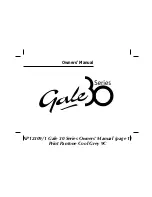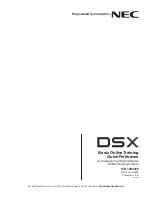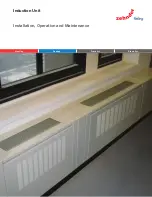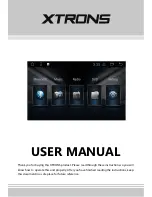
24
Summer Vacation Recommendations and Procedures
Use and Care of the System
Your solar water heating system is designed so
that the key components can be easily isolated
for emergency repairs or routine maintenance.
By shutting a single valve you can isolate the
entire system from the pressurized cold water
supply line (No. 19). In the case of a storage
tank or fitting leak immediately shut this valve
and call your installation contractor for service.
The collector loop can be isolated from the solar
storage tank by closing isolation ball valves
(Nos. 6 and 8). If the pressure in this loop drops
or you find a glycol leak shut these valves and
contact your installation contractor. Turn the
circulating pump off by setting the controller to
the “off” position.
In two tank systems the solar storage tank can
be isolated from the back-up water heater.
Set all necessary isolation ball valves to the off
position to service the solar storage tank or the
back up water heater.
Solar water heating systems can build up
very high
temperatures
when there is no
daily draw on the system. If a short summer
vacation is planned the best way to dissipate
heat in the system is to set the controller to the
"on" position. The circulating pump will run
twenty-four hours a day and cool off the water
in the solar storage tank at night. The collector
radiates heat back to the atmosphere at night,
preventing the system from stagnating at very
high temperatures. This will not harm the pump
or add substantially to your monthly utility bill.
Remember to set the control to the "Automatic"
setting upon your return!
During extended summer vacations (4 weeks
or more) it is advisable to either cover the
solar collectors with an opaque material or to
manually drain the collector loop HTF. The
manufacturer recommends that you cover the
collectors if practical.
If you choose to drain the HTF in the collector
loop follow these steps:
Turn the controller to the “off” position (No. 4).
Connect one end of a garden hose to the
isolation/drain valve (No. 6) and place the other
end in a five gallon bucket. Open the valve and
gravity will drain the heat transfer fluid into the
bucket. Repeat process using isolation / drain
valve (No. 7) . A licensed recycler, reclaimer or
incinerator must dispose of the Dowfrost HD.
DO NOT DUMP DOWFROST HD
INTO A STORM SEWER, ON THE
GROUND OR INTO ANY BODY OF
WATER. BE CAREFUL. THE HTF
MAY BE EXTREMELY HOT!
I
f the system is installed with an optional
time clock make sure the clock is not preset to
go "ON" during your absence. If you have a
mechanical time switch, remove the "on" tripper
from the clock face (No. 33).
When you return home contact your service
contractor to recharge the system with HTF.
After the system has been recharged, set the
controller to the “automatic” position
Isolating the Major Components and System Shut Down
Procedures









































